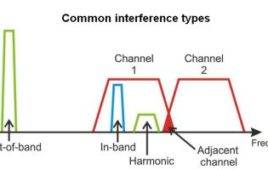This Thursday marks an important step in securing America’s leadership in the next-generation of wireless. The Federal Communications Commission will begin exploring how to unlock mid-band spectrum – those airwaves between 3.7 GHz and 24 GHz – to meet Americans’ mobile demands.
From China and Japan to Australia and the United Kingdom, countries around the world have identified mid-band spectrum as a key set of frequencies to deliver next-generation 5G wireless services and unlock the full potential of the Internet of Things. These countries are moving aggressively, already auctioning or allocating swaths of mid-band airwaves so their wireless industries can develop the mobile devices, chipsets, and infrastructure that put this spectrum to use.
The United States needs to keep pace, especially now that wireless has become Americans’ preferred communications platform. The evidence is in – and it’s overwhelming: Over the past two years, U.S. wireless data has increased over 200 percent.
Mobile data demand will continue to surge. Cisco predicts that the traffic flowing across our wireless networks will grow five-fold by 2021. That growth will be driven in part by an estimated 600 million mobile connections that will come online by the end of the decade – nearly all connected to 4G and 5G networks.
These numbers make Thursday’s FCC vote to study new mid-band spectrum all the more important. Rural communities will benefit from new mid-band spectrum, which travels farther than high-band spectrum, meaning it offers a blend of wireless coverage and capacity for places like Texas, where I grew up.
Coupled with the FCC’s efforts to enhance the rules governing access to the 3.5 GHz, the new FCC has already demonstrated a commitment to ensuring that U.S. spectrum policy leads the world.
Overall, we need a mix of low-, mid-, and high-band spectrum to meet consumer demand for wireless and unlock the economic benefits that will flow from 5G networks.
The FCC’s mid-band spectrum vote will complement the successful incentive auction that freed up 84 MHz of low-band spectrum and the agency’s work to free up airwaves above 24 GHz in the Spectrum Frontiers proceeding.
As we prepare to welcome the world’s wireless industry to San Francisco next month for Mobile World Congress Americas, U.S. policymakers have an opportunity to send a signal that our country can – and will – move quickly to ensure America continues its global leadership in everything wireless.
Filed Under: Wireless • 5G and more, Telecommunications (spectrums)




